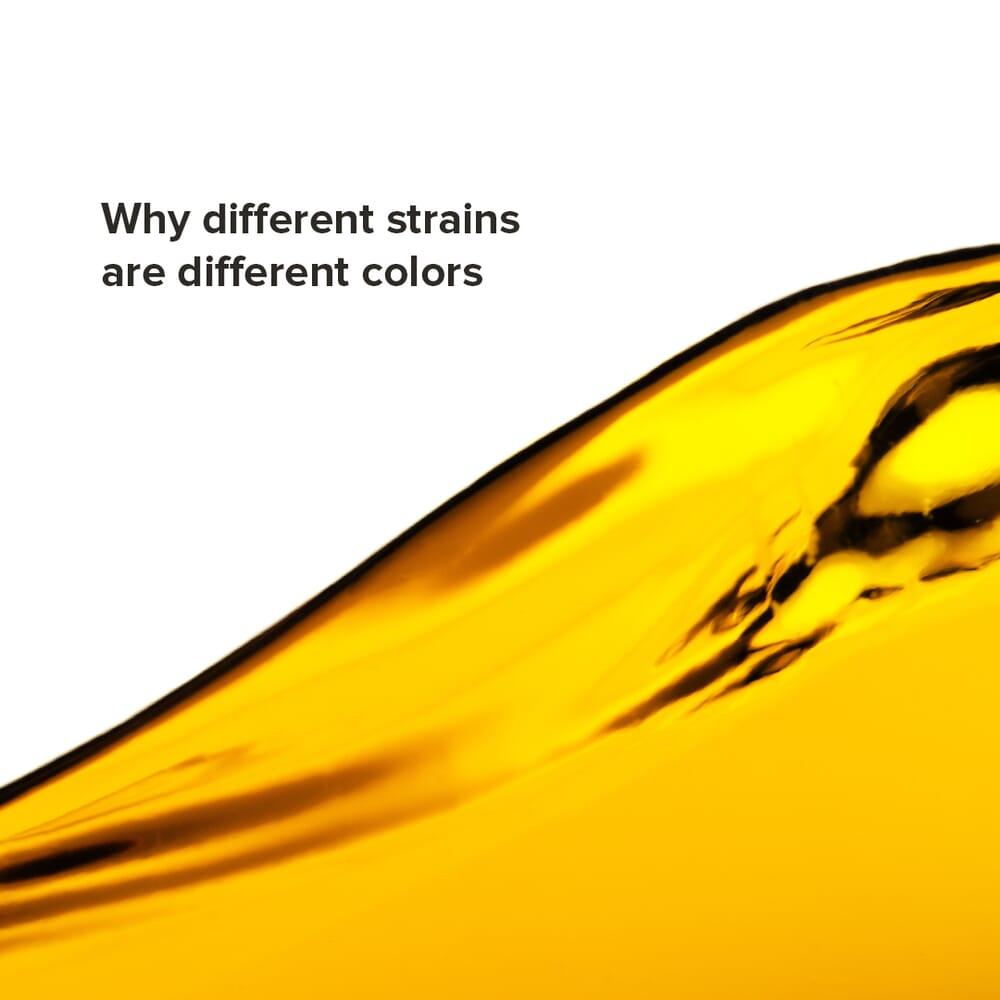
What Colors Cannabis
Why do different cannabis oils have different hues? While we all pine for that perfectly light, translucent amber glow that we have come to characterize with a nice oil, the truth is that not all cannabis oils will be the same color. The primary reason for this is that the plants we extract our oil from vary in color, which is even more visible when concentrated. But why is it that cannabis plants themselves vary in color? Contrary to popular belief, cannabis color is not an indicator of potency. So, what really colors cannabis? In this article, we’ll take a look at all the variables involved in the final color of the oil in your vape.
What is Cannabis Oil?
Cannabis oil is derived from the cannabis plant. At Kurvana, we see cannabis oil as a remarkable natural essence, a true gift from nature. It’s a concentrated liquid extract containing the plant’s potent compounds like cannabinoids and terpenes. These compounds, including well-known ones like THC and CBD, are responsible for the plant’s therapeutic and psychoactive effects. Our cannabis oil is crafted using advanced extraction techniques, ensuring purity and potency. We believe in harnessing the plant’s full potential to create an experience that’s not just about enjoyment, but also about well-being and connection to nature.
How is THC Oil Made?
The process of making THC oil is as complex as it is fascinating. It involves extracting cannabinoids and terpenes from select cannabis strains. At Kurvana, this process is a meticulous endeavor. We extract our oils using the whole, live plant in our own state-of-the-art labs. This results in a product that truly represents the essence of its source, which means some oils are naturally more brown, while others result in more subtle hues.
Variations in THC Oil Color and Cannabis Strains
Like fruits and vegetables, cannabis plants are different colors because of their phytochemicals. Phytochemicals are said to dictate the color, smell, and even taste of fruits and vegetables. The color spectrum of THC oil, particularly when considering light vs. dark brown THC oil, offers insights into the product’s nature. Here are the top three reasons for these color variations:
- Extraction Methods: The method used to extract THC from the cannabis plant plays a pivotal role in determining the oil’s color. Advanced techniques like CO2 extraction yield a lighter, more transparent color due to their efficiency in removing unwanted plant material and chlorophyll. In contrast, traditional methods might result in darker oils due to the presence of additional plant substances.
- Presence of Chlorophyll: Chlorophyll, the pigment responsible for the green color in plants, can influence the color of THC oil. When present, it can give the oil a darker, greenish hue. The amount of chlorophyll left in the final product depends on the extraction process and the conditions under which the plant material was dried and cured.
- Type of Cannabis Strain: The specific strain of cannabis used also affects the color of the oil. Different strains have varying levels of compounds like chlorophyll, terpenes, and cannabinoids, which can all contribute to the final color of the oil. For instance, some strains may naturally produce oil that is darker or lighter than others. Our ASCND strain, Lunar OG, will almost always exhibit a different oil color when compared to its sativa counterpart, Tangie Dream. This is not because of a variance in quality, but rather a number of natural factors that contribute to the extract’s pigment.
Does THC Oil Expire?
A vital aspect of understanding cannabis oil pens and cartridges is knowing about the shelf life of cannabis oil. Proper storage, in a cool and dark environment, can go a long way toward preserving its quality. Kurvana ensures that our products are stored under ideal conditions, thus maximizing their longevity and maintaining their exceptional quality. Once you take them home, remember to keep your vapes stored out of direct sunlight to maximize their longevity.
The color of cannabis oil, from the lighter shades of brown THC oil to the darker tones of dark brown THC oil, can be a meaningful indicator of its quality and the expertise behind its production. Understanding these colors and their implications can greatly improve your overall vaping experience. Kurvana stands committed to providing the best THC oil, where every drop is a blend of quality, purity, and the art of fine cannabis craftsmanship.
People Also Ask
How dark should cannabis oil be?
The color spectrum of cannabis oil varies. Darker shades might suggest specific processing methods or natural aging, while lighter hues often indicate a purer, more refined product.
Is dark cannabis oil better than light?
The quality of cannabis oil is not solely determined by its color. The extraction process, strain used, and storage conditions are critical factors in defining its quality.
Kurvana’s premium, full-spectrum cannabis oils are synonymous with quality and excellence. Experience the purity and potency that set our cannabis oil pens apart. Find your strain










